
Trabzon, historically known as Trebizond, is a city on the Black Sea coast of northeastern Turkey and the capital of Trabzon Province. Trabzon, located on the historical Silk Road, became a melting pot of religions, languages and culture for centuries and a trade gateway to Persia in the southeast and the Caucasus to the northeast. The Venetian and Genoese merchants paid visits to Trabzon during the medieval period and sold silk, linen and woolen fabric. Both republics had merchant colonies within the city – Leonkastron and the former "Venetian castle" – that played a role to Trabzon similar to the one Galata played to Constantinople. Trabzon formed the basis of several states in its long history and was the capital city of the Empire of Trebizond between 1204 and 1461. During the early modern period, Trabzon, because of the importance of its port, again became a focal point of trade to Persia and the Caucasus.

Pontus or Pontos is a region on the southern coast of the Black Sea, located in the modern-day eastern Black Sea Region of Turkey. The name was applied to the coastal region and its mountainous hinterland by the Greeks who colonized the area in the Archaic period and derived from the Greek name of the Black Sea: Εύξεινος Πόντος (Eúxinos Póntos), "Hospitable Sea", or simply Pontos as early as the Aeschylean Persians and Herodotus' Histories.

The Turkish War of Independence was a series of military campaigns and a revolution waged by the Turkish National Movement, after the Ottoman Empire was occupied and partitioned following its defeat in World War I. The conflict was between the Turkish Nationalists against Allied and separatist forces over the application of Wilsonian principles, especially self-determination, in post-World War I Anatolia and eastern Thrace. The revolution concluded the collapse of the Ottoman Empire; ended of the Ottoman sultanate and Ottoman caliphate, and established the Republic of Turkey. This resulted in the transfer of sovereignty from the sultan-caliph to the nation, setting the stage for nationalist revolutionary reform in Republican Turkey.
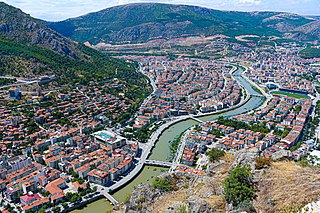
Amasya is a city in northern Turkey, in the Black Sea Region. It was called Amaseia or Amasia in antiquity. It is the seat of Amasya Province and Amasya District. Its population is 114,921 (2021). Amasya stands in the mountains above the Black Sea (Karadeniz) coast, set apart from the rest of Anatolia in a narrow valley along the banks of the Yeşilırmak River. Although near the Black Sea, this area is high above the coast and has an inland climate, well-suited to growing apples, for which Amasya province, one of the provinces in north-central Anatolia Turkey, is famed. It was the home of the geographer Strabo and the birthplace of the 15th century Armenian scholar and physician Amirdovlat Amasiatsi. Located in a narrow cleft of the Yeşilırmak (Iris) river, it has a history of 7,500 years with many traces still evident today.
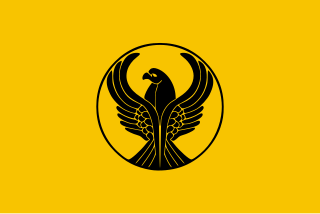
The Pontic Greeks, also Pontian Greeks or simply Pontians, are an ethnically Greek group indigenous to the region of Pontus, in northeastern Anatolia. They share a common Pontic Greek culture that is distinguished by its music, dances, cuisine, and clothing. Folk dances, such as the Serra, and traditional musical instruments, like the Pontic lyra, remain important to Pontian diaspora communities. Pontians traditionally speak Pontic Greek, a modern Greek variety, that has developed remotely in the region of Pontus. Commonly known as Pontiaka, it is traditionally called Romeika by its native speakers.

Merzifon is a town in Amasya Province in the central Black Sea region of Turkey. It is the seat of Merzifon District. Its population is 61,376 (2021). The mayor is Alp Kargı (CHP).

The Greek genocide, which included the Pontic genocide, was the systematic killing of the Christian Ottoman Greek population of Anatolia, which was carried out mainly during World War I and its aftermath (1914–1922) – including the Turkish War of Independence (1919–1923) – on the basis of their religion and ethnicity. It was perpetrated by the government of the Ottoman Empire led by the Three Pashas and by the Government of the Grand National Assembly led by Mustafa Kemal Atatürk, against the indigenous Greek population of the Empire. The genocide included massacres, forced deportations involving death marches through the Syrian Desert, expulsions, summary executions, and the destruction of Eastern Orthodox cultural, historical, and religious monuments. Several hundred thousand Ottoman Greeks died during this period. Most of the refugees and survivors fled to Greece. Some, especially those in Eastern provinces, took refuge in the neighbouring Russian Empire.

The Special Organization was an intelligence, paramilitary, and secret police organization in the Ottoman Empire known for its key role in the commission of the Armenian genocide. Originally organized under the Ministry of War, the organization was shifted to answer directly to the ruling party Committee of Union and Progress (CUP) in February 1915. Led by Bahaeddin Şakir and Nazım Bey and formed in early 1914 of tribesmen as well as more than 10,000 convicted criminals—offered a chance to redeem themselves if they served the state—as a force independent of the regular army.
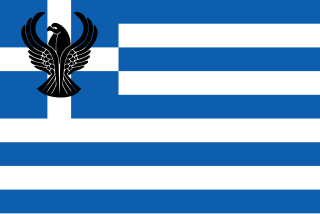
The Republic of Pontus was a proposed Pontic Greek state on the southern coast of the Black Sea. Its territory would have encompassed much of historical Pontus in north-eastern Asia Minor, and today forms part of Turkey's Black Sea Region. The proposed state was discussed at the Paris Peace Conference of 1919, but the Greek government of Eleftherios Venizelos feared the precarious position of such a state and so it was included instead in the larger proposed state of Wilsonian Armenia. Ultimately, however, neither state came into existence and the Pontic Greek population was massacred and expelled from Turkey after 1922 and resettled in the Soviet Union or in Macedonia, Greece. This state of affairs was later formally recognized as part of the population exchange between Greece and Turkey in 1923. In modern Greek political circles, the exchange is seen as inextricable from the contemporaneous Greek genocide.

The Black Sea Region is a geographical region of Turkey. The largest city in the region is Samsun. Other big cities are Zonguldak, Trabzon, Ordu, Tokat, Giresun, Rize, Amasya and Sinop.
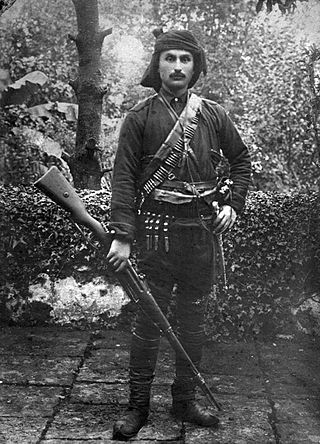
Hacı Topal Osman Ağa also known as Osman the Lame, was a Turkish officer, a militia leader of the National Forces, a volunteer regiment commander of the Turkish army during the Turkish War of Independence who eventually rose to the rank of lieutenant colonel, and was a perpetrator of the Armenian and Pontic genocides. Except the Greeks and Armenians, he also terrorised local Muslim population who opposed him.

The Greeks in Georgia, which in academic circles is often considered part of the broader, historic community of Pontic Greeks or—more specifically in this region—Caucasus Greeks, is estimated at between 15,000 and 20,000 people to 100,000 down from about 100,000 in 1989. The community has dwindled due to the large wave of repatriation to Greece as well as emigration to Russia, and in particular Stavropol Krai in the North Caucasus region of southern Russia. The community has established the Union of Greeks in Georgia and there is a Cultural Centre and a newspaper entitled Greek Diaspora.
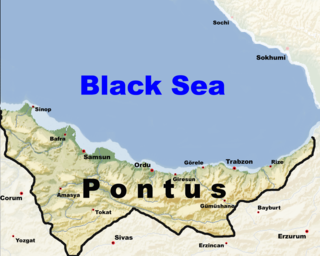
The Pontic Greek genocide, or the Pontic genocide, was the deliberate and systematic destruction of the indigenous Greek community in the Pontus region in the Ottoman Empire during World War I and its aftermath.
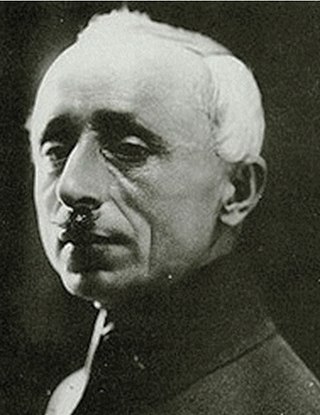
Refet Bele, also known as Refet Bey or Refet Pasha was a Turkish military commander. He served in the Ottoman Army and the Turkish Army, where he retired as a general.

Matthaios Kofidis was an Ottoman Greek businessman, historian and a politician, who was a member of the Ottoman Parliament. He was elected in three successive periods from 1908 to 1918. In 1921 he was among the notables of the Greek community of the Pontus region who were hanged by the Turkish nationalists of Mustafa Kemal.
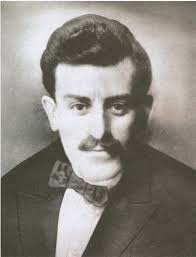
Nikos Kapetanidis was a Pontian Greek journalist and newspaper publisher from Rizunda. He was hanged by Turkish nationalists serving under Mustafa Kemal during the Amasya trials.

The İzmit massacres were atrocities committed in the region of İzmit, Turkey, during the Greco-Turkish War (1919–1922) which took place during the Greek genocide. An Inter-Allied Commission of Enquiry that investigated the incidents, submitted a report, on 1 June 1921, about the events.

Saint Euthymios of Zela the Ethno-Hieromartyr,, born Eustratios Agritellis, 1876–1921, was the last resident bishop of the Diocese of Zela, near Amasia, Western Pontus, which he served from June 12, 1912, until his death on May 29, 1921, during the period of the Greek genocide.
The Samsun deportations were a series of death marches orchestrated by the Turkish National Movement as part of its extermination of the Greek community of Samsun, a city in northern Turkey, and its environs. It was accompanied by looting, the burning of settlements, rape, and massacres. As a result, the Greek population of the city and those who had previously found refuge there—a total of c. 24,500 men, women and children—were forcibly deported from the city to the interior of Anatolia in 1921–1922. The atrocities were reported by both American Near East Relief missionaries and naval officers on destroyers that visited the region.

Below is an outline of Wikipedia articles related to the Greek genocide and closely associated events and explanatory articles. The topical outline is accompanied by a chronological outline of events. References are provided for background and overview.
![The town of Amasya, in the interior of the Black Sea coast, where the trials and the executions took place.
.mw-parser-output .infobox-subbox{padding:0;border:none;margin:-3px;width:auto;min-width:100%;font-size:100%;clear:none;float:none;background-color:transparent}.mw-parser-output .infobox-3cols-child{margin:auto}.mw-parser-output .infobox .navbar{font-size:100%}body.skin-minerva .mw-parser-output .infobox-header,body.skin-minerva .mw-parser-output .infobox-subheader,body.skin-minerva .mw-parser-output .infobox-above,body.skin-minerva .mw-parser-output .infobox-title,body.skin-minerva .mw-parser-output .infobox-image,body.skin-minerva .mw-parser-output .infobox-full-data,body.skin-minerva .mw-parser-output .infobox-below{text-align:center}@media screen{html.skin-theme-clientpref-night .mw-parser-output .infobox-full-data:not(.notheme)>div:not(.notheme)[style]{background:#1f1f23!important;color:#f8f9fa}}@media screen and (prefers-color-scheme:dark){html.skin-theme-clientpref-os .mw-parser-output .infobox-full-data:not(.notheme) div:not(.notheme){background:#1f1f23!important;color:#f8f9fa}}@media(min-width:640px){body.skin--responsive .mw-parser-output .infobox-table{display:table!important}body.skin--responsive .mw-parser-output .infobox-table>caption{display:table-caption!important}body.skin--responsive .mw-parser-output .infobox-table>tbody{display:table-row-group}body.skin--responsive .mw-parser-output .infobox-table tr{display:table-row!important}body.skin--responsive .mw-parser-output .infobox-table th,body.skin--responsive .mw-parser-output .infobox-table td{padding-left:inherit;padding-right:inherit}}
Amasya trials
Location
Pontus, Ottoman empire
Date
1921
Target
Prominent members of the Pontiac Greek community
Attack type
Genocidal massacre, genocide
Motive
Turkification of Pontus, Turkish nationalism, racism, Anti-Greek sentiment Amasya-eski.jpg](http://upload.wikimedia.org/wikipedia/commons/thumb/0/00/Amasya-eski.jpg/220px-Amasya-eski.jpg)


















